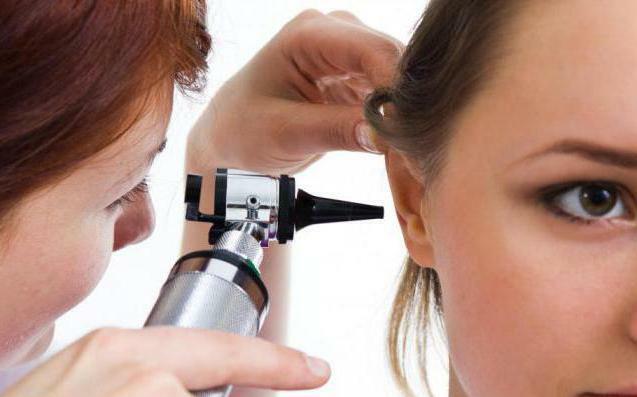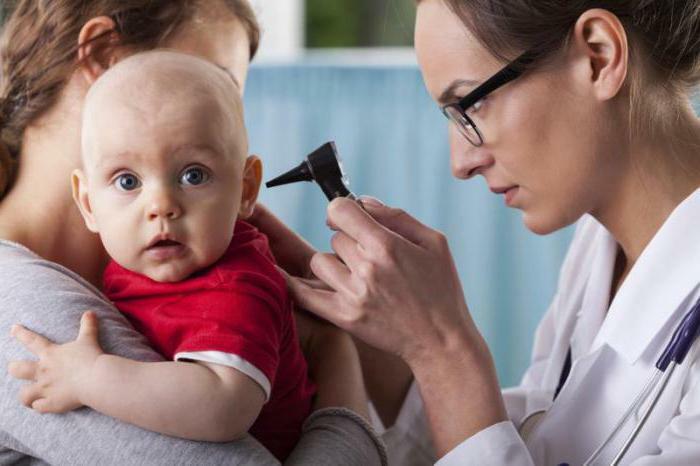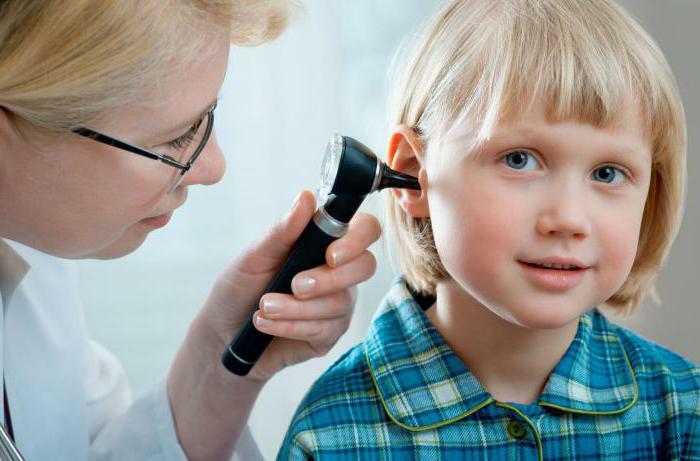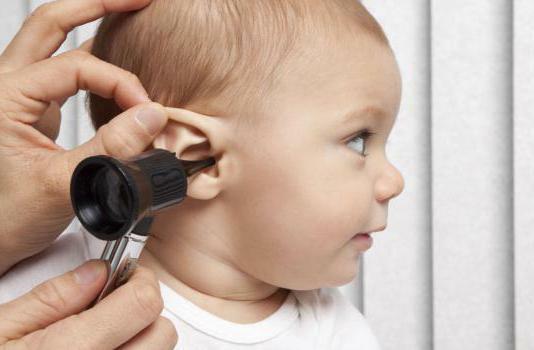How to blow your ears properly at home
Inflammation of the middle ear is one type of otitis that can affect even two ears. To prevent the formation of such a disease and its prevention, you can try to blow your ears.
What is otitis
Otitis is an inflammatory malaise of the middle ear. With such a disease, inflammation develops in the ear cavity, pus accumulates. With this disease you can face at any age, but more often it is seen in children. In children, repeated otitis is found due to the anatomical specificity of the structure of the middle ear: the tube( auditory) in children is shorter than in adults, it is practically flat and it does not have folds. Such a structure of the ear in a child simplifies the penetration of infection into the ear cavity. During the first 3 years of life around 80% of children get otitis media once. 
Why the ear is blown
The cleaning of the auditory tube is the introduction into the middle ear of the air flow under its pressure with a therapeutic and diagnostic purpose. The event is advised to do with the treatment of the effects of strong, chronic inflammation of the middle ear and after tympanoplasty.
Valsalva blowdown method
This type of self-cleaning is the simplest. With this technique, the patient must purge the ear through the nose, grasping it with his fingers, and with the stress begin to blow out the air that penetrates through the nasopharynx into the auditory tube. The negative sides of this method are:
- the probability of rupture of the tympanic membrane, if a great effort is made;
- infection and secretion from the nasal sinus in the middle ear;
- is allowed to blow only one ear;
- inability to measure the volume of incoming air;
- it is impossible to infuse medications into the Eustachian tube.

Modified method of the
Polisher In the treatment of a patient with exudative otitis media, the cleaning with a rubber tube and olive connected to the vessel is performed to produce air pressure to open the passage of the auditory tube, and to remove the exudate collected in the tympanum.
How to properly blow your ears with this method? To make a purge, you must first perform a pure anemization of the pharyngeal ear opening and the mucous wall of the nasopharynx. To do this, when inhaled, spray a 3% mixture of ephedrine chloride( 1 ml) in the nose mixed with 0.1% adrenaline solution( 1 drop).Such an event is done several times without stopping with an interval of 3-5 minutes. If there is no nebulizer, then the nasal probe can be wound with cotton wool, well impregnated with this mixture of ephedrine, and this technique blows the ears.
Now the probe should be inserted into the sinus of the nose( instead of the "sick" tube) until it stops in the back of the pharynx. Then you need to pull it back a little, put the patient's head on the inflamed ear, so that the anemia solution flows out of the cotton wool into the tube. After a few minutes, the probe can be removed and proceeded to the second point of the cleaning procedure. The patient's head is turned over to the other side, tilting it forward, and then turning to the healthy side, so that the diseased ear is on top, and the tube is perpendicular, and the exudate can drain from the tympanum down through the auditory tube. And now for certain it is already becoming clear to many how to blow the ears with otitis. 
The air entering the tympanic sinus increases the intrapotimnal pressure, pulling out its flexible part, which, due to elasticity, occupies the original position, displacing the exudate accumulated near the opening of the auditory tube. In certain situations, such a cleaning is sufficient to achieve the desired result. However, it happens that the patency of the auditory tube is fully renewed, but the exudate during a period of malaise has received such a sticky consistency that it can not be evacuated by a natural way. Sometimes, to get rid of it, you need to blow your ears repeatedly.
Young children often resist using the method of the Politzer. In this case, the baby is laid on his back in order to fix his position. Then the tip of the vessel is placed in one nostril, and the other is covered with a finger. The child should open his mouth to pour in a teaspoon of water. At the time of the swallowing process, air is blown. If there is a valve-like closure of the passage of the auditory tube, or the adenoid tissue will be directly attached to it, then the cleaning will not work.
Disadvantages of this method
And then the question arises - can I blow my ears? Yes, however, when the main factor of the disease is the stable dysfunction of the auditory tube, it is rather difficult to hope for good results only when the organ is cleared. In the majority of children who developed exudative otitis media, a critical intrapotinal pressure was observed as a result of tympanometry. After blowing the ear with a Politzer balloon, the pressure in the tympanic sinus usually improved, but after 15-20 minutes it returned to the initial level. 
With long and persistent retraction of the tympanic membrane, if there are adhesive manifestations( including repeated changes in the contracted muscles of the middle ear), the cleaning is ineffective. And besides, it can happen that it will hurt to blow your ears.
Usefulness of the event
Even if we consider the result of ear cleaning with a constant average otitis as a temporary flow, then still such a procedure can be positive because of its massaging effect. With each purging, the tympanic membrane changes its location, as a result of which the contracting muscle tendon stretches the web, and the auditory ossicles in the joints weaken. But all this has significance for the prevention of adherent processes in the tympanic sinus, as well as ankylosis of the ossicles.
Need to know
It should be understood that it is necessary to blow ears with extreme caution, without using excessive air pressure, so that the membrane of the snail's window and the eardrum do not explode. There is a possibility of such deterioration, indicating the possibility of breaking the chain of auditory ossicles. These complications can begin when the ear is cleared during the Valsalva process, when the air pressure in the ear canal is quite high. 
There is also a kind of dosed blowing of the ears. It is recommended to perform such self-inflation in a relatively gentle way: pinch your nose with your fingers and, swelling your cheeks, make a swallowing movement. This effect is more stable than with the simple method of Valsalva.
Ear cleaning with massage
How do you blow your ears at home? It is possible also with the help of a pneumomassage of the tympanic membrane, which is done by hand, massaging the tragus, tightly closing the entrance to the auditory opening. To do this, you can also use a Ziegle funnel or a separate pneumatic massager that presses the air in the auditory gleam and thereby promotes bones and the eardrum.
Many patients notice that their state of health becomes better as a result of the toe massage of the tragus. It is important that in the implementation of this event( and when you need to blow your ears too), the patient's head leans toward the healthy ear. Due to the correct compression of the air, the tympanic membrane, pressing inward, pushes out the next portion of the exudate accumulating at the tympanic passage of the auditory tube to the exit. 
With
catheter This method is good because it is possible to clean only one ear and inject a medicament into the auditory tube. A steel ear catheter of the required size( the difference is in the numbering) after the preparatory anemia of the nasal cavity and easy local anesthesia of the mucous wall of the nasal passage is gently placed in the inner nasal passage and its curved beak is inserted into the eustachian tube opening. And now you can understand how to properly blow your ears.
With the help of the Potitor's chamber, and also the otoscope, which connects the ear of the patient with the physician's organ, a clear sound of the air through the ear tube is heard. As a result of this procedure, the necessary drug substance is inserted into the deepened distal catheter section, and the agent is blown in with the blood vessel of the Politzer with air. This whole process of cleaning is controlled through the otoscope.
Diagnosis of otitis
Diagnosis of such a disease is usually handled by an otolaryngologist. If a patient has any suspicious symptoms, you should immediately contact a specialist, and he will tell you how to blow your ears at home. It should also be noted that the recognition of otitis in toddlers is complicated due to limited oral contact between the doctor and the child. 
Contraindication of
Ear cleaning is harmful if there are acute inflammatory processes in the nasopharynx and nose due to the likelihood of infection by the air flow of pathogens into the sinus, as well as the formation of purulent and acute otitis.
Complications and Forecast
The following worsening is possible, if inadequate therapy was performed, or it was not completed:
- brain abscess;
- mastoiditis( inflammation of the mastoid process), where surgery is necessary;
- meningitis.
The prognosis for a correct and appropriate treatment of otitis is positive. But it's better to try to always protect yourself, avoiding cool and windy places, so that you do not have to ask yourself afterwards whether the doctor can blow the ear, then you have to turn to him for help.
